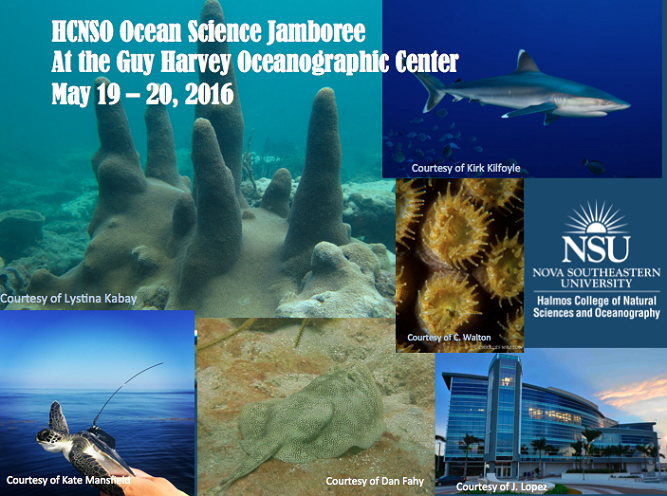Title
Active Linkage of Large Vertebrates and the Deep-Pelagic Fauna of the Oceanic Gulf of Mexico after Deepwater Horizon: Vertical Dynamics of the Epipelagic, Mesopelagic and Bathypelagic Ichthyofauna
Location
Guy Harvey Oceanographic Center Facility
Start
5-20-2016 12:15 PM
End
5-20-2016 12:30 PM
Abstract
Large predatory fishes, toothed whales, and smaller cetaceans rely on deep-pelagic nekton as primary or secondary prey. This trophic interaction is mediated by downward and upward vertical migration (e.g., sperm whales and mesopelagic lanternfishes, respectively). This interaction also links particulate-feeding lower trophic levels with top predators in a manner that spans the gamut of depth domains. This is particularly important with respect to a whole-water column disturbance such as the Deepwater Horizon oil spill. Here we present highly resolved vertical distribution and migration data collected during a large-scale, NOAA-supported, deep-pelagic (0-1500 m) survey in 2011, along with data collected during ongoing GoMRI-supported DEEPEND consortium surveys. The deep-pelagic nekton community of the Gulf of Mexico is a complex mixture of migrating, non-migrating, and partially migrating assemblages that connect surface waters with depths well in excess of 1000 m. Major patterns of the vertical distribution of 151 species of fishes are summarized and quantified with the goal of highlighting potential vectors of anthropogenic contamination transfer in the deep-pelagial, the Gulf’s largest ecosystem. Among the key findings: 1) the epipelagial is truly two ecosystems, depending on time of day; 2) the largest active flux is that of the synchronous migrators, but a large biomass component of the epipelagial at night is contributed by deep-to-very-deep asynchronous migrators; and 3) vertical migration by the bathypelagic fauna is readily apparent. In summary, the deep-pelagic nekton provide an essential intermediate service with respect to ecosystem functioning, efficiently linking lower and higher trophic levels through movement and consumption.
Presenter(s) Biography
More information can be read about Dr. Sutton and the DEEPEND Project at:
http://www.deependconsortium.org/index.php?option=com_content&view=article&id=70
Active Linkage of Large Vertebrates and the Deep-Pelagic Fauna of the Oceanic Gulf of Mexico after Deepwater Horizon: Vertical Dynamics of the Epipelagic, Mesopelagic and Bathypelagic Ichthyofauna
Guy Harvey Oceanographic Center Facility
Large predatory fishes, toothed whales, and smaller cetaceans rely on deep-pelagic nekton as primary or secondary prey. This trophic interaction is mediated by downward and upward vertical migration (e.g., sperm whales and mesopelagic lanternfishes, respectively). This interaction also links particulate-feeding lower trophic levels with top predators in a manner that spans the gamut of depth domains. This is particularly important with respect to a whole-water column disturbance such as the Deepwater Horizon oil spill. Here we present highly resolved vertical distribution and migration data collected during a large-scale, NOAA-supported, deep-pelagic (0-1500 m) survey in 2011, along with data collected during ongoing GoMRI-supported DEEPEND consortium surveys. The deep-pelagic nekton community of the Gulf of Mexico is a complex mixture of migrating, non-migrating, and partially migrating assemblages that connect surface waters with depths well in excess of 1000 m. Major patterns of the vertical distribution of 151 species of fishes are summarized and quantified with the goal of highlighting potential vectors of anthropogenic contamination transfer in the deep-pelagial, the Gulf’s largest ecosystem. Among the key findings: 1) the epipelagial is truly two ecosystems, depending on time of day; 2) the largest active flux is that of the synchronous migrators, but a large biomass component of the epipelagial at night is contributed by deep-to-very-deep asynchronous migrators; and 3) vertical migration by the bathypelagic fauna is readily apparent. In summary, the deep-pelagic nekton provide an essential intermediate service with respect to ecosystem functioning, efficiently linking lower and higher trophic levels through movement and consumption.


